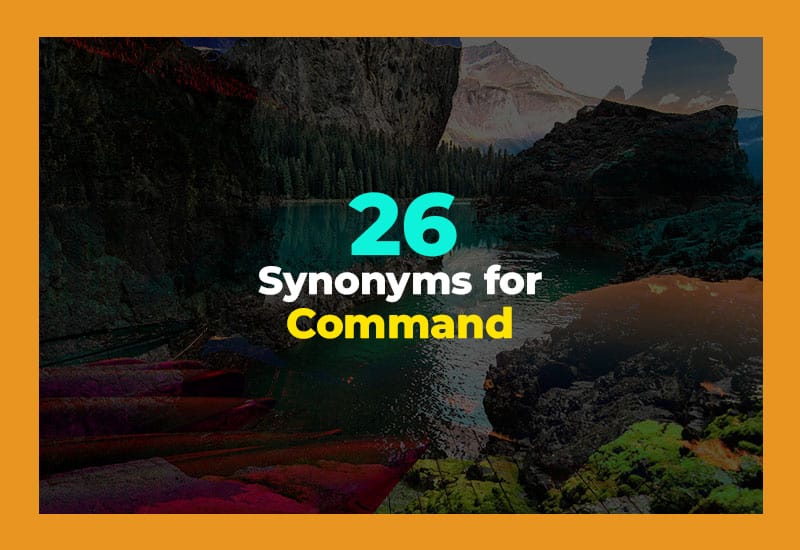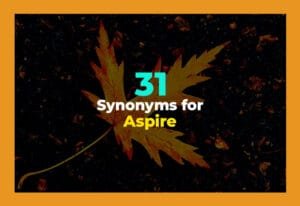Looking for another word for command? You're in the right place! Words like order, instruction, and directive all mean something close to command, and they can sound way cooler. Let's check them out together with real-life examples and easy meanings that feel just like you're chatting with a friend.
1. Order
An order is a clear statement telling someone to do something. It is often used by people in charge. For example, “The captain gave an order to stop the ship.” Orders are meant to be followed without question, especially in the army, at work, or even at home. Parents, teachers, and bosses all give orders when they need something done. When you use the word order, it usually means the command is strong and should be obeyed. Orders help keep things organized, safe, and clear for everyone involved.
2. Instruction
An instruction is a step or direction that tells someone what to do. It is often found in books, manuals, or given by a person. For example, “She followed the instructions to bake a cake.” Instructions are usually broken into steps, making tasks easier to complete. Teachers, coaches, or devices like GPS give instructions to help others get results. Using instruction instead of command makes it sound a bit more friendly or helpful. It's not always strict, but it's still something meant to be followed to do something right.
3. Directive
A directive is an official command or instruction given by someone in a position of authority. For example, “The manager issued a directive to change the meeting time.” Directives are usually used in workplaces, schools, or government offices. They are more formal than regular instructions and often written down. A directive is meant to guide actions and decisions. It shows that the speaker has power or control and expects others to follow through. It's another way to say someone gave a strong, clear command that must be carried out.
4. Mandate
A mandate is a strong command or official order to do something. For example, “The school has a mandate that all students must wear uniforms.” Mandates are often used by governments, leaders, or organizations. They are rules that must be followed, not just suggestions. A mandate can also mean someone has been given the authority to do something important. It shows power, duty, and control. Using mandate instead of command can sound more serious and official. It often affects groups of people, not just one person.
5. Decree
A decree is a command or decision made by someone with power, usually a king, president, or judge. For example, “The king made a decree to lower taxes.” Decrees are often used in legal or royal settings. They are official, final, and must be followed. A decree is not something you argue with—it's already decided. When you use the word decree, it shows strong authority and a public decision. People must listen and act according to it. It's formal, serious, and used for important matters.
6. Edict
An edict is a public command or announcement by a leader or government. For example, “The mayor issued an edict to close parks during the storm.” Edicts are often used during emergencies or big changes. They are written or spoken rules that must be followed by everyone. Edict sounds strong and official, often related to the law or serious matters. When you use edict, you mean something that's not open for discussion. It's a top-down command that tells people exactly what to do, and when to do it.
7. Dictate
To dictate means to say or give a command that must be followed. For example, “She dictated the letter to her assistant.” It can also mean to control or rule by giving strict instructions. Dictates are often strict and don't leave room for discussion. People in powerful positions may dictate how things should be done. The word can also be used as a noun, like a dictate of policy. It sounds more forceful than a simple instruction and often means the speaker expects full obedience.
8. Commandment
A commandment is a strong rule or law that must be obeyed. For example, “One commandment is to always speak the truth.” It is often used in religious settings, like the Ten Commandments in the Bible. These are moral rules that guide people on how to live. A commandment is more than a suggestion—it's a rule you're expected to follow for life. When you use commandment instead of command, it often means something serious, guiding, and long-lasting. It helps people know what is right and wrong.
9. Ruling
A ruling is a decision or command made by someone with legal or official power. For example, “The judge's ruling ended the case.” It's common in courtrooms and legal settings. A ruling tells people what the final decision is, and they must follow it. When you hear a ruling, it means no more arguments—the command is final. Rulings can also be made in sports, schools, or businesses. It's a way of saying someone in charge has made a choice that everyone must accept and follow.
10. Charge
A charge can be a command or duty given to someone. For example, “She was given charge of the team project.” It means someone has responsibility or control over something. A charge might not always be a direct order, but it still shows trust and leadership. Being in charge means you make decisions and give instructions. Using charge in place of command can show more responsibility and care. It's not just about telling people what to do—it's about leading them too.
11. Bidding
Bidding means doing something because someone with power told you to. For example, “He acted at the king's bidding.” It often sounds formal or old-fashioned, but it still means following a command. Bidding is like carrying out someone else's wishes. When someone follows your bidding, they are doing what you ask without question. It can sound poetic or dramatic but still shows someone giving and someone obeying a command. It's often used in stories or history-related situations.
12. Direction
A direction is a way of guiding someone by telling them what to do. For example, “She gave clear directions for the group activity.” Directions are not always strict, but they still serve as a command. Teachers, signs, and apps all give directions. When you use the word direction, you mean someone is being guided, often step by step. It's helpful and polite, but still shows control. Directions help people know where to go, what to do, or how to do it right.
13. Requirement
A requirement is something that must be done or followed. For example, “A helmet is a requirement for riding a bike here.” It's like a rule or command that you can't skip. Requirements are used in jobs, schools, and laws. When you use requirement instead of command, it sounds a little more formal or rule-based. It shows that something is not optional. If you don't follow the requirement, there might be a consequence. It's firm, clear, and meant to be obeyed.
14. Regulation
A regulation is an official rule or command created by an authority. For example, “There's a new regulation about using phones at school.” Regulations are common in governments, schools, and businesses. They guide behavior and keep things fair or safe. When you hear the word regulation, think of rules that must be followed. They're often written and official. Using regulation instead of command can sound more like a law or policy, and it shows structure and control from people in charge.
15. Request
A request is when someone asks for something, but in a polite way. For example, “She made a request to leave early.” A request can still feel like a command if it comes from someone important. While requests are not as strict as orders, they often expect action. The tone matters—if a boss makes a request, people usually follow it. When you say request instead of command, it softens the tone. It shows respect but still means someone wants something to be done.
16. Demand
A demand is a strong request that sounds like a command. For example, “He made a demand for a refund.” It means someone wants something done right away and is not willing to wait. Demands can feel forceful or urgent. People use them when they feel strongly or when they're in a tough situation. A demand is louder than a request and sharper than a suggestion. When someone makes a demand, it shows they expect others to take action now.
17. Instructional
Instructional means something that teaches or gives guidance, like a command in learning. For example, “The video was very instructional and easy to follow.” It doesn't sound strict, but it still shows someone telling you how to do something. Instructional content is often found in schools, apps, or manuals. It gives people clear steps or ideas to follow. When you say instructional, you mean something that gives helpful direction or control, usually in a friendly and learning way.
18. Control
Control means having power to give commands and make sure they are followed. For example, “The coach had full control over the game plan.” It's more than just giving orders—it's about managing and leading. Someone with control makes decisions and expects them to be followed. Parents, bosses, and leaders often have control in different areas. Using control instead of command shows someone's ability to guide and manage others or situations. It's a strong word that shows power and responsibility.
19. Leadership
Leadership means guiding or commanding people in a group or task. For example, “Her leadership helped the team win the match.” A leader gives direction and helps others reach a goal. Leadership is more than just giving orders—it's also about support, motivation, and vision. When someone has leadership, they use commands to help others, not just control them. It shows responsibility and care. Using leadership instead of command makes it sound more positive and inspiring.
20. Authority
Authority means the power or right to give commands and expect obedience. For example, “The teacher has authority in the classroom.” People with authority make rules and enforce them. It could be a parent, boss, police officer, or government official. When someone speaks with authority, they speak with confidence and control. Authority gives strength to commands. Using authority instead of command means focusing on the power behind the action. It helps show respect and order in any group or setting.
21. Rule
A rule is a command that tells people what they can or cannot do. For example, “One rule is no running in the hallway.” Rules are found everywhere—in games, schools, homes, and laws. They help people live or work together safely and fairly. A rule is a type of command that must be followed, and breaking it usually has a consequence. Using rule instead of command helps show the long-term or official nature of the command. It's part of order and structure.
22. Governance
Governance means the way decisions and commands are made and followed in a group. For example, “The school's governance includes teachers and parents.” It's about leadership, rules, and structure. Good governance means fair decisions and clear rules. It's often used in schools, governments, and organizations. When you use governance instead of command, it sounds more official and wide-ranging. It's not just one command—it's the system that gives and follows commands. It's about running things smoothly.
23. Jurisdiction
Jurisdiction is the area or power to give commands and make decisions. For example, “The police have no jurisdiction outside the city.” It means someone has legal control over a place or situation. Jurisdiction is important in courts, laws, and governments. If someone has jurisdiction, they have the right to command and act. Using jurisdiction instead of command focuses on where and how commands can be made. It's about having the right and limit to give orders.
24. Supervision
Supervision means watching over someone while guiding or commanding them. For example, “The kids played under the teacher's supervision.” It means someone is in charge and making sure things are done right. Supervision often includes giving instructions, corrections, and help. It's a command with care. Using supervision instead of command adds a softer, more responsible tone. It shows control but also safety and support. It's often used in work, schools, and care settings.
25. Dictation
Dictation means speaking words that someone else writes down or follows. For example, “The teacher gave a dictation test in class.” It can also mean giving commands by speaking. People use dictation when they want to control what is written or said. It shows clear instruction, often word for word. Using dictation instead of command makes it sound more about speaking and control over words. It's helpful in office work, writing, and learning.
26. Authorization
Authorization means giving someone the power or right to act. For example, “She got authorization to enter the building.” It's like a command that allows something to happen. Authorization is often written or official. It gives permission and control to act. When you say authorization instead of command, you mean someone is being allowed to do something under someone's rule. It's important in business, law, and safety.

Final Thoughts
Commands can come in many forms—order, rule, directive, or instruction. Each word has its own style and tone. Some sound strong, like mandate or decree. Others are polite, like request or supervision. Knowing the right synonym helps you communicate better, whether you’re writing, leading, or simply talking to someone. Now that you know 26 different words for command, you can use them the next time you want to give an order, a suggestion, or simply guide someone. Language becomes easier when you understand your choices!









